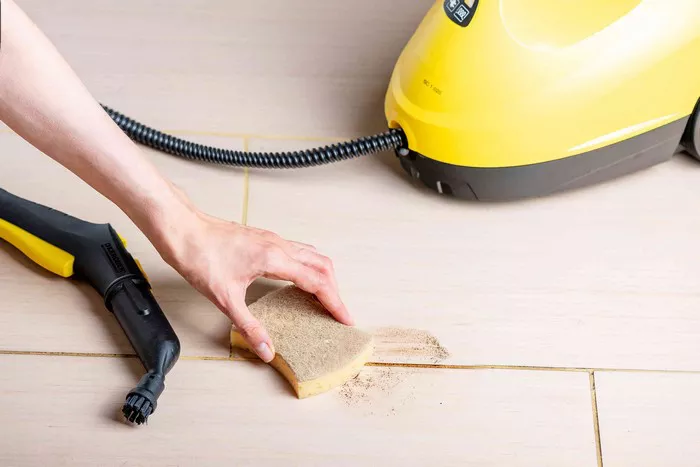Hard water stains can be a nuisance, leaving unsightly marks on surfaces around your home. These stubborn stains are caused by minerals like calcium and magnesium that are present in hard water. While there are various methods to tackle these stains, using a steam cleaner can be an effective and eco-friendly solution. In this guide, we’ll explore the process of removing hard water stains with a steam cleaner, including preparation, application, and best practices.
Understanding Hard Water Stains
Before diving into the removal process, it’s essential to understand what hard water stains are and how they form. Hard water contains high levels of dissolved minerals, particularly calcium and magnesium. When hard water evaporates, it leaves behind these minerals, which can accumulate on surfaces, such as glass, tile, stainless steel, and faucets. Over time, these mineral deposits create stubborn stains that can be challenging to remove with conventional cleaning methods.
Preparation
Before using a steam cleaner to remove hard water stains, it’s crucial to prepare the affected area properly:
1. Gather Supplies: Besides the steam cleaner, you may need a microfiber cloth, distilled water (if required by your steam cleaner), and any recommended cleaning solution.
2. Ventilation: Ensure adequate ventilation in the area you’ll be cleaning, as steam cleaners produce hot vapor.
3. Test Spot: Before proceeding, test the steam cleaner on a small, inconspicuous area to ensure it doesn’t damage the surface.
4. Remove Loose Debris: Wipe away any loose debris or dirt from the surface using a dry cloth or vacuum cleaner.
Using the Steam Cleaner
Once you’ve prepared the area, follow these steps to remove hard water stains with a steam cleaner:
1. Fill the Reservoir: Fill the steam cleaner’s reservoir with water according to the manufacturer’s instructions. Some steam cleaners may require distilled water to prevent mineral buildup.
2. Heat Up the Cleaner: Plug in the steam cleaner and allow it to heat up to the appropriate temperature. This typically takes a few minutes.
3. Select the Proper Attachment: Choose the appropriate attachment for the surface you’re cleaning. For example, use a detail nozzle for small areas or a brush attachment for larger surfaces.
4. Apply Steam: Hold the steam cleaner a few inches away from the stained surface and activate the steam function. Move the steam cleaner methodically across the area, ensuring thorough coverage.
5. Focus on Problem Areas: Pay extra attention to areas with stubborn stains, applying steam directly to the affected spots for a longer duration.
6. Wipe Away Stains: As the steam loosens the hard water stains, use a microfiber cloth to wipe away the residue. Continue steaming and wiping until the stains are removed.
7. Repeat if Necessary: For particularly stubborn stains, you may need to repeat the process multiple times.
8. Allow to Dry: Once the stains are removed, allow the surface to air dry completely.
Best Practices
To achieve optimal results when using a steam cleaner to remove hard water stains, consider these best practices:
1. Regular Maintenance: To prevent the buildup of hard water stains, regularly clean surfaces prone to mineral deposits using a steam cleaner or appropriate cleaning method.
2. Use Distilled Water: If your steam cleaner recommends or requires distilled water, adhere to this guideline to prevent mineral buildup within the machine.
3. Protect Surfaces: Consider applying a protective coating or sealant to surfaces prone to hard water stains, such as glass shower doors or stainless steel fixtures, to make cleaning easier in the future.
4. Follow Manufacturer’s Instructions: Always follow the manufacturer’s instructions for your steam cleaner to ensure safe and effective operation.
5. Ventilate the Area: Ensure proper ventilation when using a steam cleaner to avoid excessive moisture buildup in the room.
6. Safety First: Exercise caution when operating a steam cleaner, as the steam produced is hot and can cause burns if mishandled.
Conclusion
Removing hard water stains with a steam cleaner offers an efficient and environmentally friendly solution to this common household problem. By following the steps outlined in this guide and incorporating best practices, you can effectively eliminate stubborn stains and restore the appearance of surfaces throughout your home. With regular maintenance and proper care, you can keep hard water stains at bay and enjoy clean, spotless surfaces for years to come.
FAQs
Q1: Can I use a steam cleaner on all surfaces to remove hard water stains?
A1: While steam cleaners are versatile tools, it’s essential to check the manufacturer’s recommendations and surface compatibility before use. Some delicate surfaces, such as unsealed wood or certain types of plastics, may be sensitive to high heat and moisture and should not be cleaned with a steam cleaner.
Q2: Are there any safety precautions I should take when using a steam cleaner?
A2: Yes, safety is paramount when using a steam cleaner. Always follow the manufacturer’s instructions, wear appropriate protective gear, such as gloves and eye protection, and keep the steam cleaner away from children and pets. Additionally, be cautious of hot surfaces and steam to avoid burns.
Q3: Can a steam cleaner completely prevent hard water stains from returning?
A3: While steam cleaning can effectively remove existing hard water stains, it may not prevent them from returning entirely. Regular maintenance, such as wiping down surfaces after each use and applying protective coatings, can help minimize the recurrence of hard water stains. Additionally, addressing the root cause of hard water, such as installing a water softening system, can reduce the formation of new stains over time.

